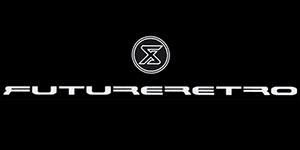
Jered Flickinger ran circles around music, trying to get to it as a DJ, performer, sound engineer, jingle maker, promoter, salesman and synthesizer repairman. The latter pushed him to the idea that he could do and would make at least one unit himself. The unit which would sound the way all his favorite bands do.
Future Retro was founded in 1997 in Austin, Texas, and the first synthesizer (supposed to sound the way Jered wanted it to) was called 777. Spending a year to create his first synthesizer, Jered decided that he could have done a couple for that same time. Throughout the following year, together with his father, he wrote code for the sequencer and was already thinking how to produce more than a couple a year.
777 prototype having the size of a 5-octave synth (although it didn’t have a keyboard) got reduced by more than twice, added some functionality, was stronger, and, which is the most important, sold. The hobby turned into a business. The industrial machine made by Flickinger grabbed the attention of KMFDM, Nine Inch Nails, Skylab2000 and Uberzone. The list was expanded by The Crystal Method and Chemical Brothers.
Initially, 777 was called Bassix (sound like in TB-303 "Bassline" + processing as in TR-606 "Drumatix"). The synthesizer changed in color, was even silver-polished manually - this model, although the manual craft wasn’t convincing enough, reached the $1800 bid on Ebay.
In 2003, the production of 777 was completed. A total of 678 devices were made, 200 of which were made by Jered himself. And since then 777 has become a rare and even in a way a cult mono synthesizer.
Mobius sequencer was also a handmade product, which was discontinued in 2008 totaling 540 units. TR-303 clones were nothing new or unusual, but few of them included a sequencer supporting V/Oct and Hz/V CV standards.
Abstrak split the rhythm and pitch, making them independent, which allowed the pitch to grow reducing the rhythm. Revolution of 2004 embodied all the properties of the sequencer 777 with the addition of a new remix function, which opened access to 256 variations of each of the patterns. In 2007 Revolution R2 was released, using a new RAM chip, which made the battery run 10 times longer than in the previous model. The production of Revolution was completed in 2012 with a 1200th copy.
In 2007 NAMM and Musikmesse saw the second and improved version of XS. The semi-modular synthesizer became even stronger now comprising 2 more oscillators, a triple subwoofer, a ring modulation function, and a white noise generator. The number of filter types was multiplied, two sensitive envelopes were added, as well as a voltage-controlled amplifier, two levels of the overload effect, a low-frequency oscillator with the possibility of MIDI synchronization.
Orb sequencer, released in 2009, was based on Revolution, ideal for XS (and other analog CV/Gate or MIDI synthesizers). Quite simple and easy to use, designed for clones 303 control.
Future Retro is a family of mutually complementary components within one author's idea. All the instruments are the result of manual work that has modified their external features so often that almost every model of any of the series could be considered a unique piece of art in someone's collection.

